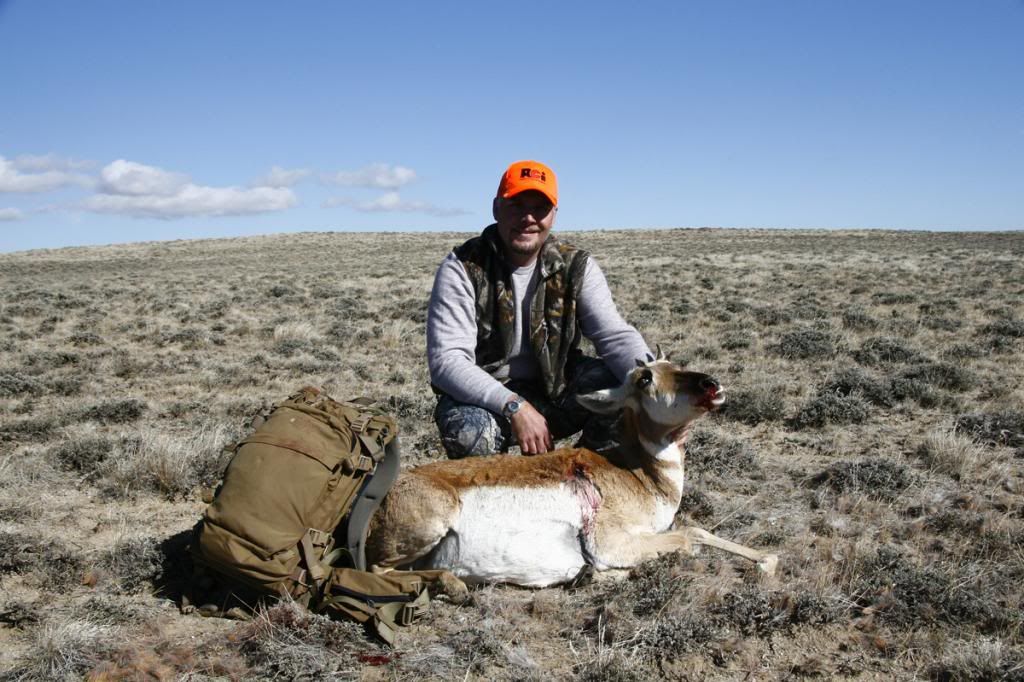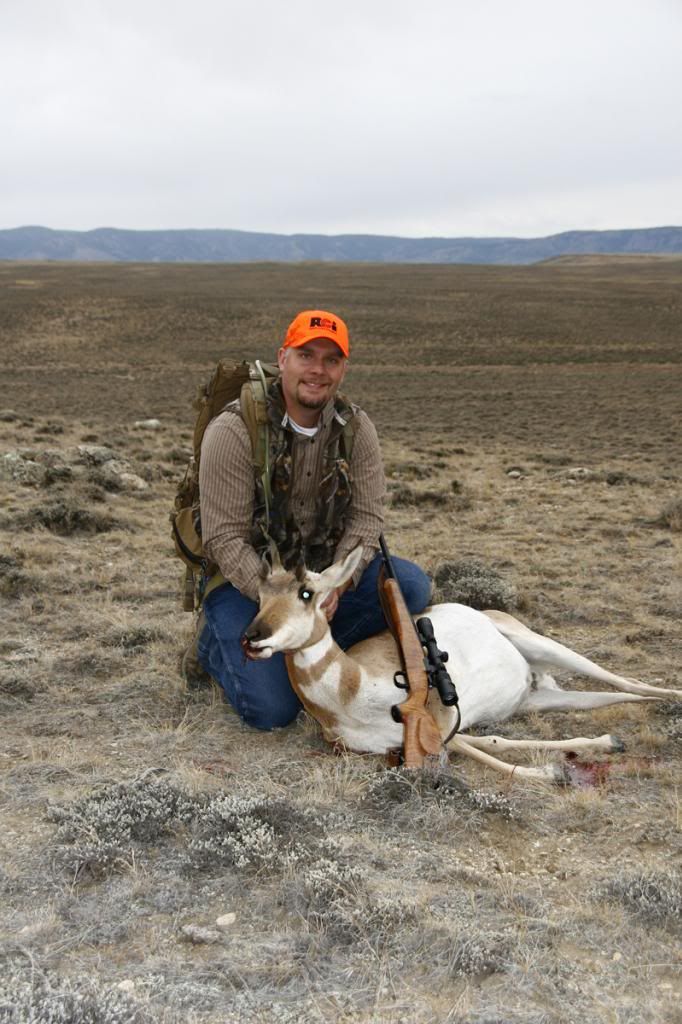

 The Accurate Reloading Forums
The Accurate Reloading Forums  THE ACCURATE RELOADING.COM FORUMS
THE ACCURATE RELOADING.COM FORUMS  Computers, Hi-Tech & Product Reviews
Computers, Hi-Tech & Product Reviews  Practical Photography For Hunters
Practical Photography For Hunters  Use fill flash on your trophy pics
Use fill flash on your trophy picsGo  | New  | Find  | Notify  | Tools  | Reply  |  |
| One of Us |
Since Wink has thrown up some helpful tips, here is my meager contribution. It has been posted before, but it has been a while. This may be old hat to some, but I see a lot of trophy pics that could have been so much better. Turn on the flash for the trophy pictures. This helps you get proper exposure of the hunter's face as well as any other shadowy areas. Here are a couple of examples of some antelope. [IMG:left]  [/IMG] [/IMG][IMG:left]  [/IMG] [/IMG] The first photo shows harsh shadows and you can't see my face. In the second photo, fill flash was used to bring out my face and get rid of shadows. Ignoring my ugly mug, you can see a marked difference in the quality of the two photos. At a minimum, take photos with and without the flash to make sure you got it. Jeremy | ||
|
| One of Us |
This is good advice, but if you are using a pocket camera be aware that in very bright sunlight the flash may not be powerful enough to really fill-in as you might like, or will cause the camera to either overexpose or underexpose the background. Sometimes the "automatic" settings go all over the place. The same holds true for DSLR's with an external flash if you're on full-auto. In farbedo's examples above, in the first photo it would take a pretty strong flash to lighten sufficiently the face of the hunter on such a sunny day, while keeping the rest of the photograph correctly exposed. In the second photo it would appear to be a cloudy or overcast day and in that case a fairly weak flash might be enough. As with a lot of things in photography, try out the different settings, such as on somebody in your backyard, and get it nailed before you go out in the field. _________________________________ AR, where the hopeless, hysterical hypochondriacs of history become the nattering nabobs of negativisim. | |||
|
| One of Us |
Does the background make much differance ? The top shot has sky for a background - would the flash have much effect against all that brightness? ________________________ Old enough to know better | |||
|
| One of Us |
It all depends on the level of ambient light, the power of the flash and the distance to the subject. And it can get more complicated than that when you consider that your camera's ability to sync with the flash will have limits with respect to shutter speed as well. In general, the higher the ambient light level the more power your flash will need to have. There are some very powerful electronic flashes out there, but they aren't incorporated into a pocket camera. But I'm speaking about generalities here. If you use a DSLR you have a few more options: http://www.digitalcameraworld....ash-in-4-easy-steps/ _________________________________ AR, where the hopeless, hysterical hypochondriacs of history become the nattering nabobs of negativisim. | |||
|
| One of Us |
Wink brings up a very good point that flash power is going to have an affect on the outcome. My example photos aren't the best, but do show it works. The main point is to take a bunch of pictures and use the flash in some and not others. You will also have to judge the brightness, and move closer to the subject if needed and possible. Will it work every time? Maybe not, but the tool is part of the camera, so why not use it and see what it does. Jeremy | |||
|
| Powered by Social Strata |
| Please Wait. Your request is being processed... |
|
 The Accurate Reloading Forums
The Accurate Reloading Forums  THE ACCURATE RELOADING.COM FORUMS
THE ACCURATE RELOADING.COM FORUMS  Computers, Hi-Tech & Product Reviews
Computers, Hi-Tech & Product Reviews  Practical Photography For Hunters
Practical Photography For Hunters  Use fill flash on your trophy pics
Use fill flash on your trophy pics

Visit our on-line store for AR Memorabilia

